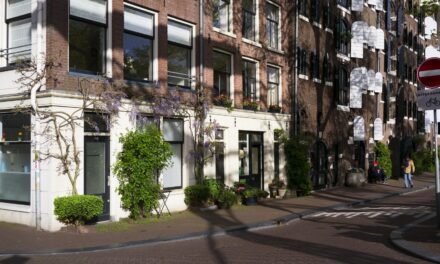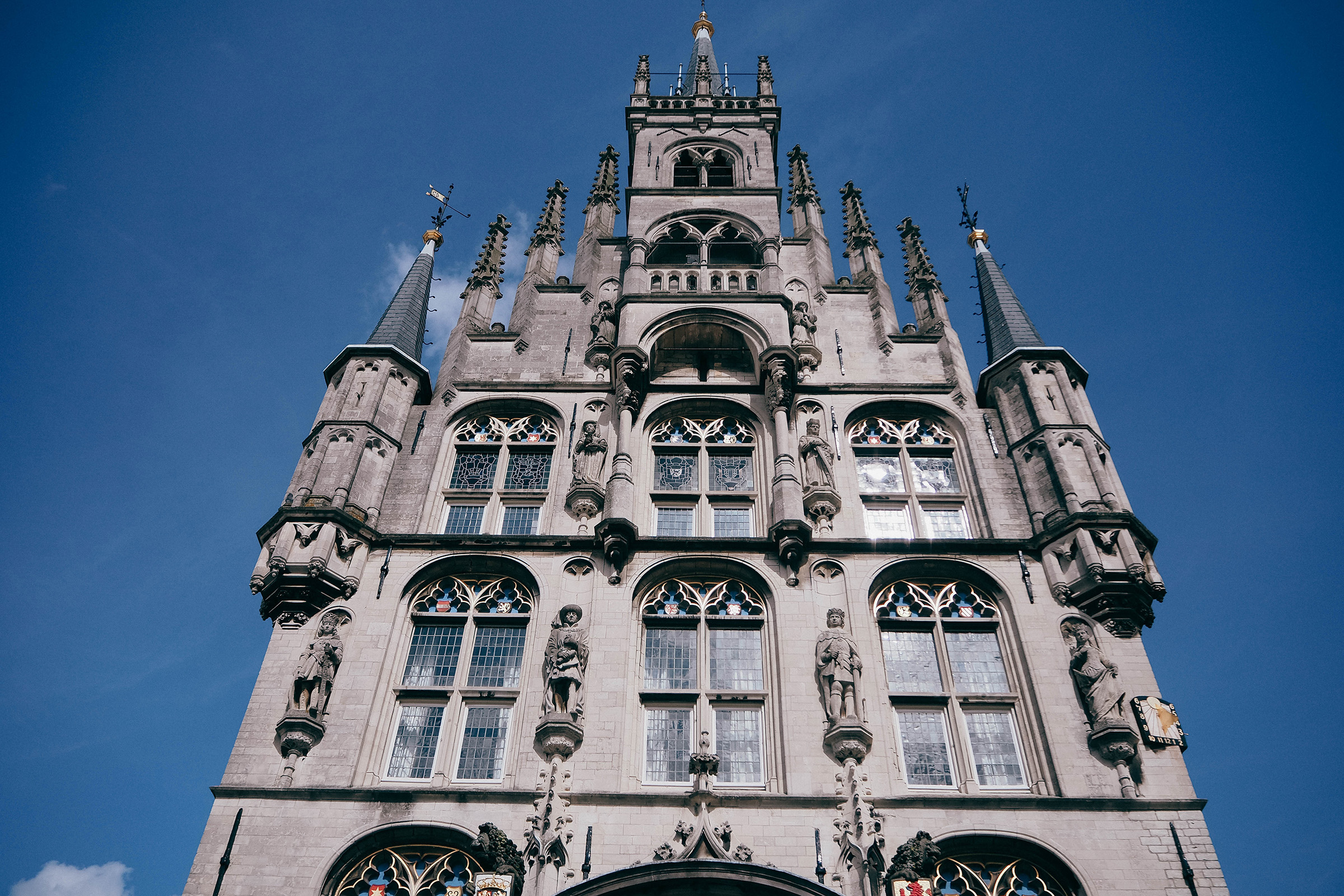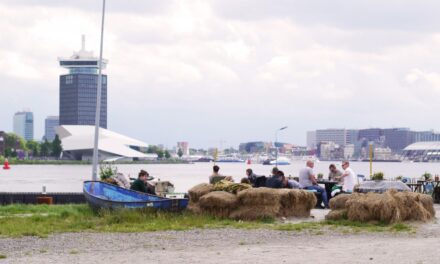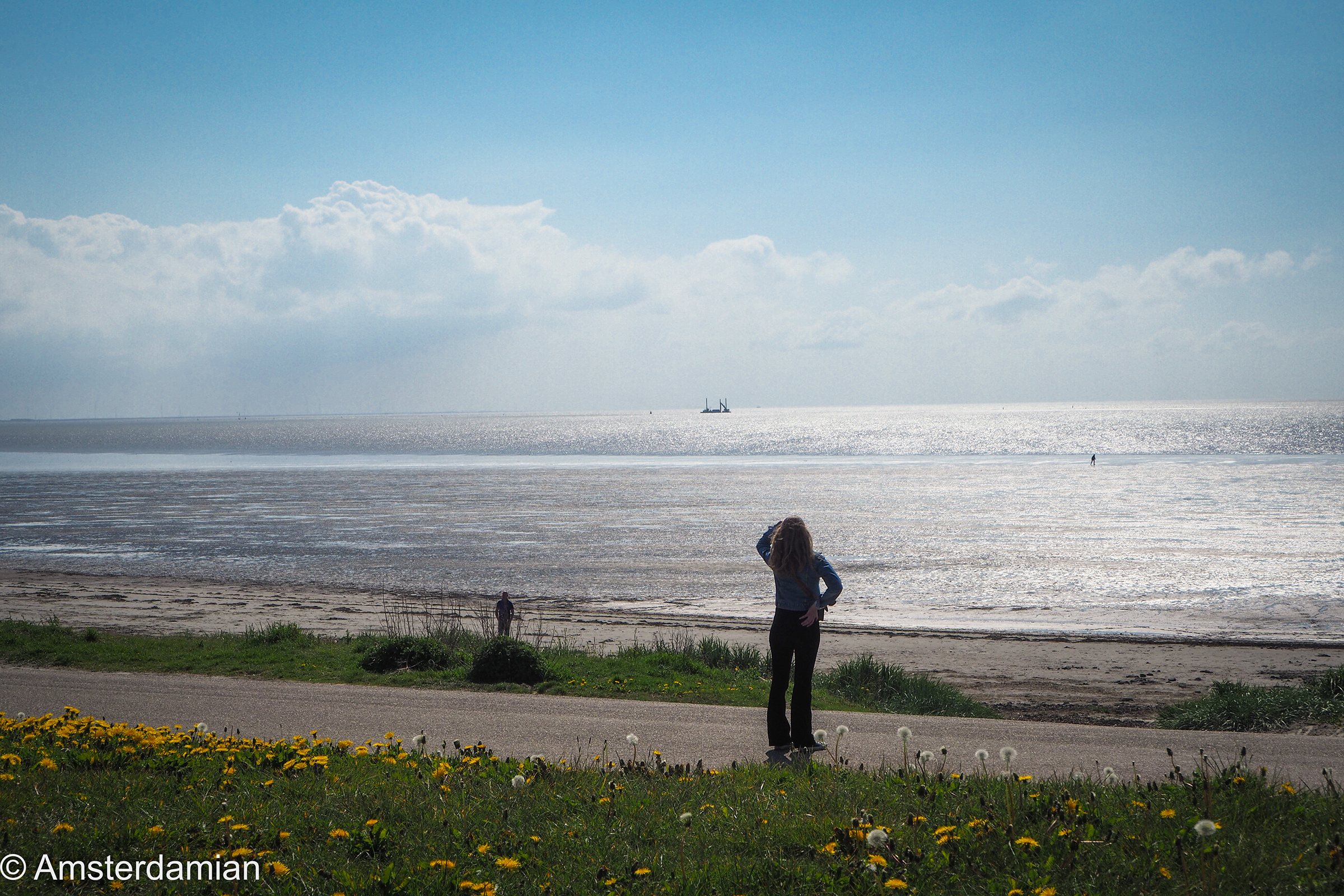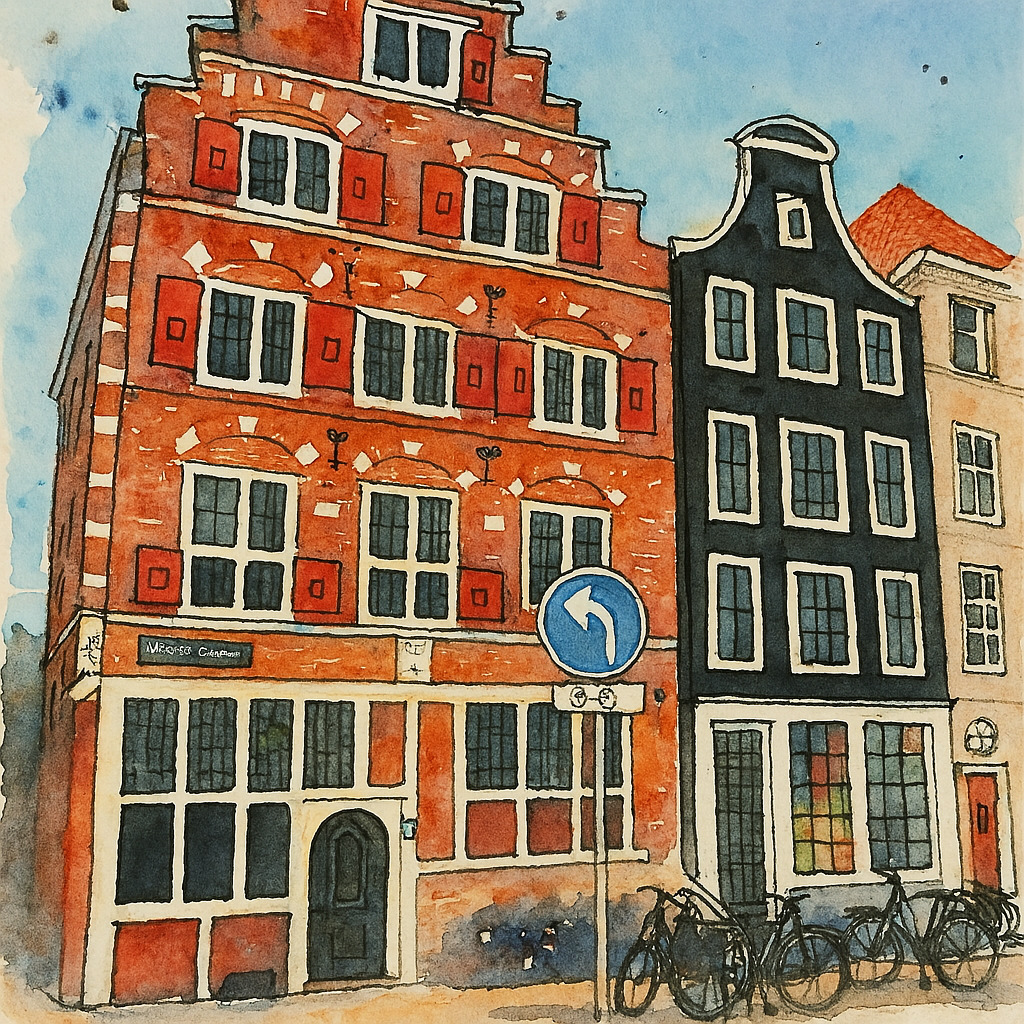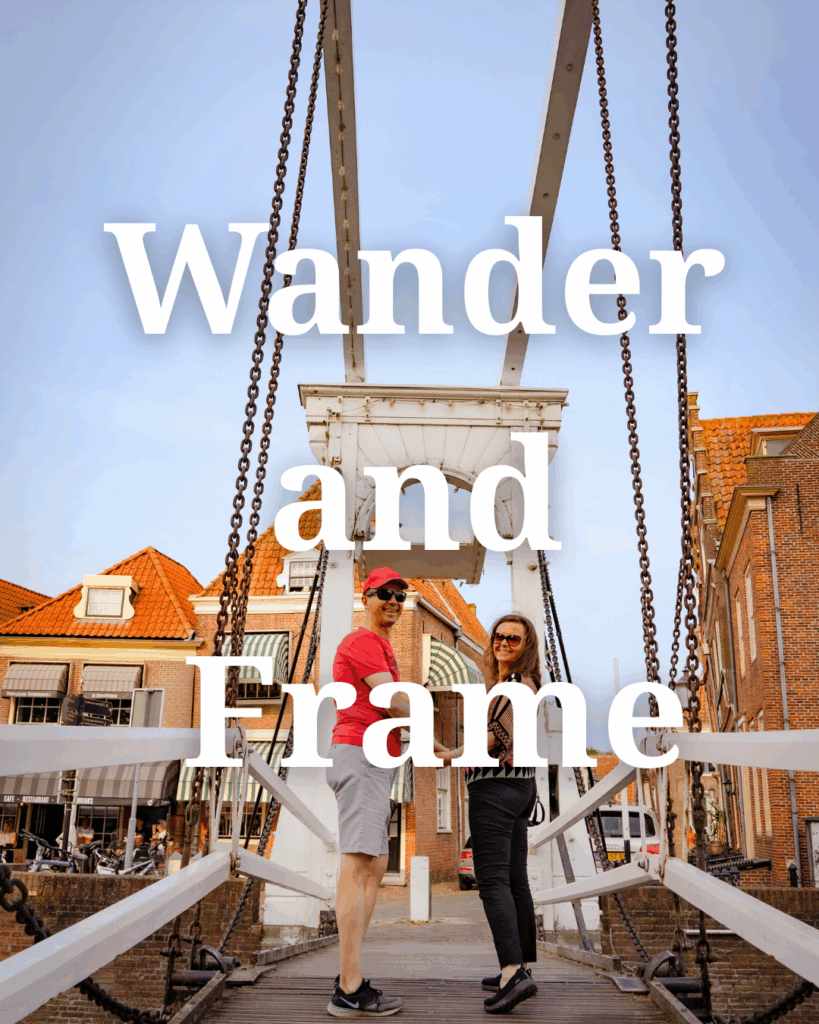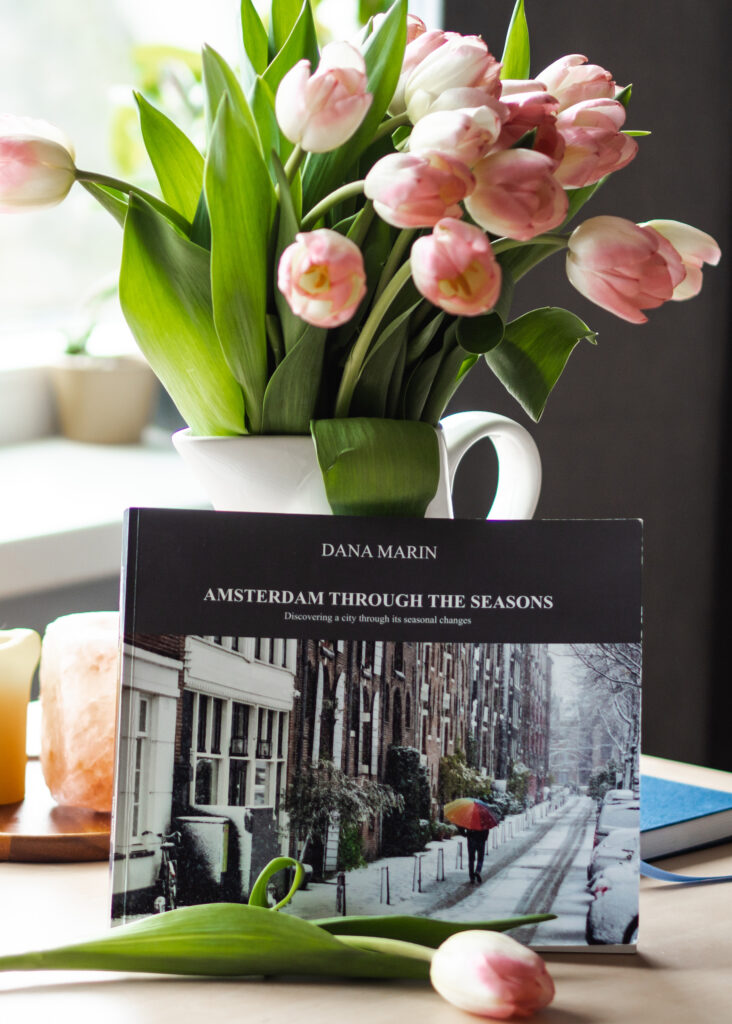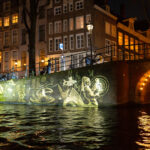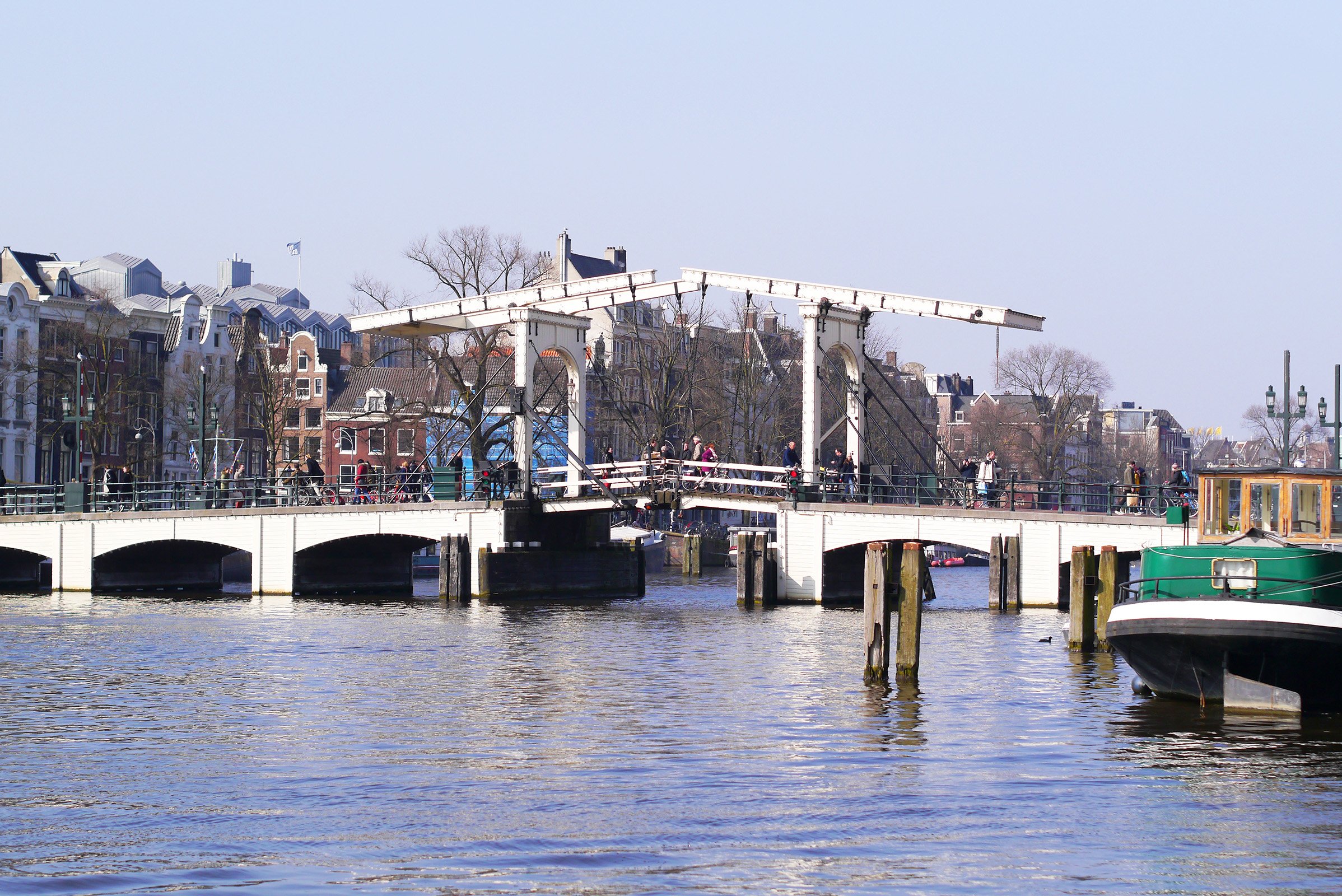When you think of the Netherlands, the first things that probably come to mind are canals, tulips, windmills, and all things gezellig. It’s the kind of country that feels safe and friendly, where the scariest thing might be a sudden downpour while you cycle home.
But look a little closer, and you’ll find that the Netherlands also has a darker side, one filled with centuries-old ghost stories, haunted places, mysterious legends, and folklore that people in some places still whisper about today.
Where the fight between the land and the sea is as old as the country, spooky stories come up inevitably: low fog over peat can become scary, windmills groaning in the dark lose their friendly image, and lost church bells are rumoured to ring beneath drowned fields. For Halloween, here’s a lantern-lit walk through Dutch hauntings, to give you chills next time you walk past a canal in the dark 😀
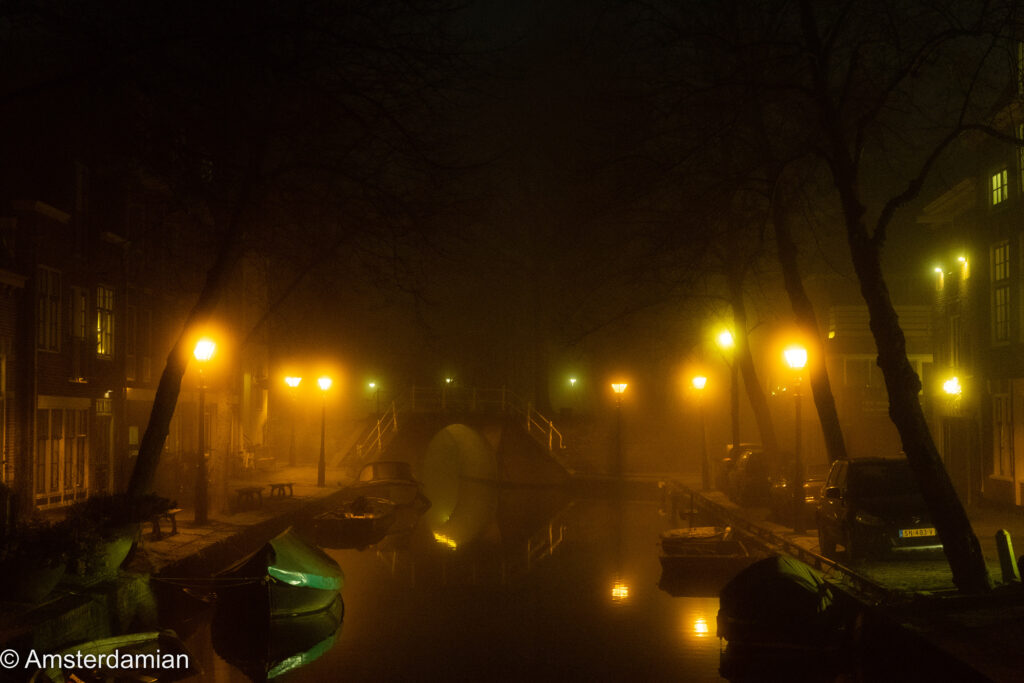
The ghost of the Zeedijk
The Zeedijk is one of the oldest streets in Amsterdam. Today, it’s lined with cafés, Chinese restaurants, and buzzing nightlife, but if you walk there late at night, you might just feel like you’re not alone (and I’m not talking about drunk tourists).
For centuries, people have spoken about a ghostly woman in white who appears along the Zeedijk. They say she’s the restless spirit of a woman, Helena, who lived in the area and killed her sister, blinded by jealousy, to marry her sailor lover. On her death bed, she confessed and her husband, shocked, left her to die alone and full of remorse. That night, the residents of Zeedijk heard vailing and crying all night long, and, since then, Helena appears on the Zeedijk in dark corners or doorways, startling those who walk by. She doesn’t speak; she just lingers, glowing faintly in the night before vanishing into thin air. Locals used to whisper that her presence was a warning, a reminder of the street’s dangerous past.
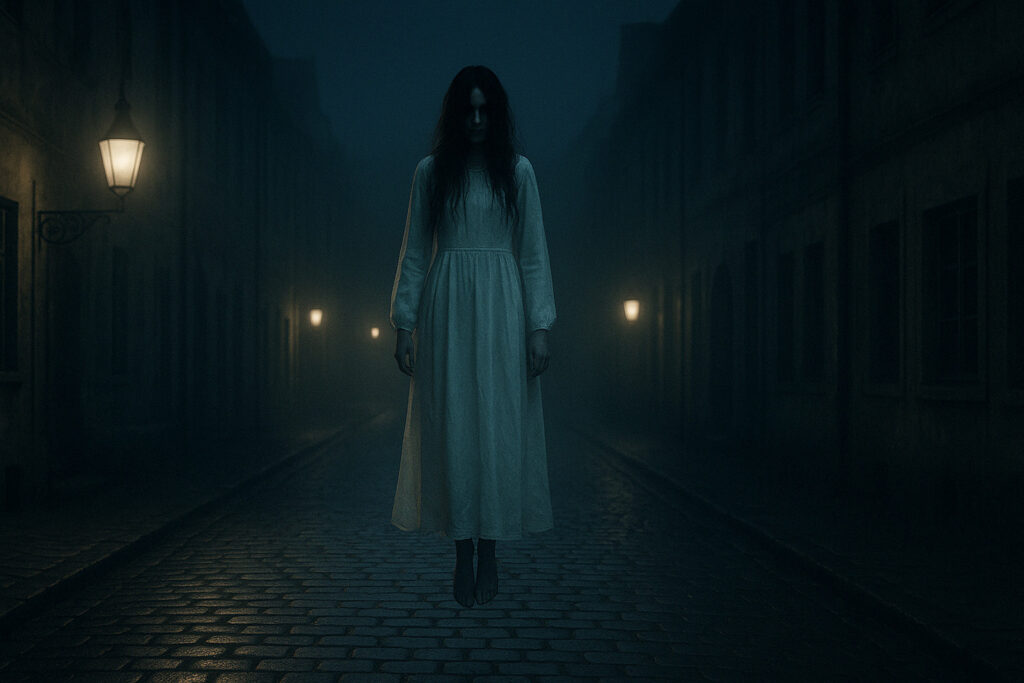
The Witte Wieven (Mist Maidens)
If you’ve ever driven or biked through the Dutch countryside early in the morning, you’ve probably seen the low mist covering fields and forests. It looks magical, and in the old days, people believed it really was. The Witte Wieven, or “White Women” are ghostly spirits that drift across the land, taking the shape of mist, or, sometimes, appearing in their true form: old women with clawed hands and razor-sharp teeth. Gulp!
The Witte Wieven were thought to be the souls of wise women, herbal healers, or even witches who died but never fully left this world. Some versions of the story consider them the souls of women who were wronged by men and came back for vengeance. They lived in burial mounds or caves and appeared as swirling, misty figures, sometimes beautiful, sometimes terrifying.
But here’s the interesting part: they weren’t always evil. In some stories, the Witte Wieven could be helpful, offering advice, healing, or protection to those who treated them with respect. Farmers would leave offerings of bread and milk to keep them happy. But if you mocked them, ignored their warnings, or wandered into their mist at the wrong time, you could be dragged away, never to return.
There are still places in the Netherlands tied to their legends, especially in the east of the country, in Drenthe and Gelderland. Ancient burial mounds, known as hunebedden, were often connected with the Witte Wieven, and people swore that on misty nights, the women danced over the fields (for some reason, this makes me think of Outlander instead of scaring me).
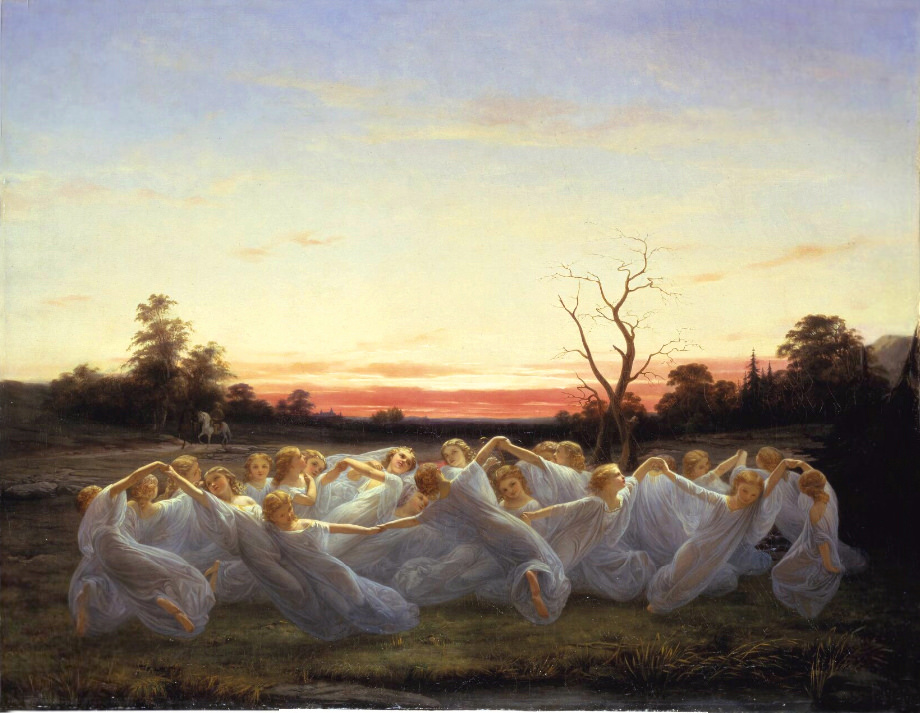
Bullebak, the Dutch Water Monster
Every culture has its own way of keeping children away from danger, and in the Netherlands, a country full of canals, rivers, and lakes, that danger was mostly the water. To make sure kids didn’t play too close to the edge, parents would warn them about Bullebak, the terrifying creature that lived in the canals.
Bullebak was described in different ways depending on who told the story. Sometimes he was a huge monster with claws and glowing eyes, sometimes a troll-like figure lurking just under the surface. But the message was always the same: if you leaned too far over the water or played at the edge of the canal, Bullebak would leap out and drag you under.
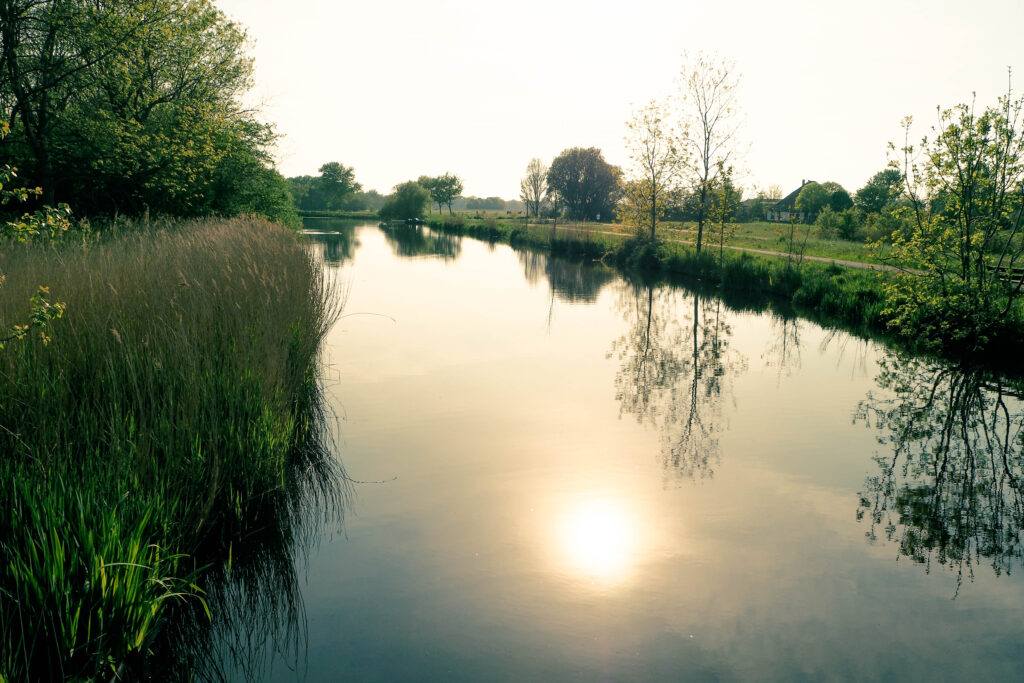
Amsterdam even has a reminder of him: the Bullebak Bridge (Bullebaksluis) near the Brouwersgracht. The name comes from this very legend, and locals used to whisper that the monster lived beneath it, waiting for careless children.
So, next time you pass over a quiet Amsterdam bridge at night, take a look into the dark water below. Who knows what’s still lurking there? But maybe don’t get too close…

The Mermaid of Edam
Not all Dutch legends are about ghosts or monsters. Some are just wonderfully strange, or sad, like the story of the mermaid of Edam.
The tale goes back to the 15th century, when a storm broke through the dikes near Edam, opening the way between the Zuiderzee (today’s IJsselmeer) and the inland waters. After the storm, locals discovered something unusual: a mermaid stranded in the mud. Instead of letting her slip back into the sea, they captured her and brought her to nearby Haarlem.
Now, this is where the story gets even stranger. The people of Haarlem tried to “civilise” the mermaid. They taught her how to wear clothes, how to spin yarn, and even how to kneel in church. According to some versions, she learned these skills surprisingly well, though she never spoke a word. She lived her life displayed as a curiosity, half-human, half-otherworldly.
Today, the mermaid of Edam is remembered less as a ghost and more as a piece of folklore, a reminder of how the Dutch imagination was shaped by the sea. In Haarlem, you can even find references to her in old chronicles.
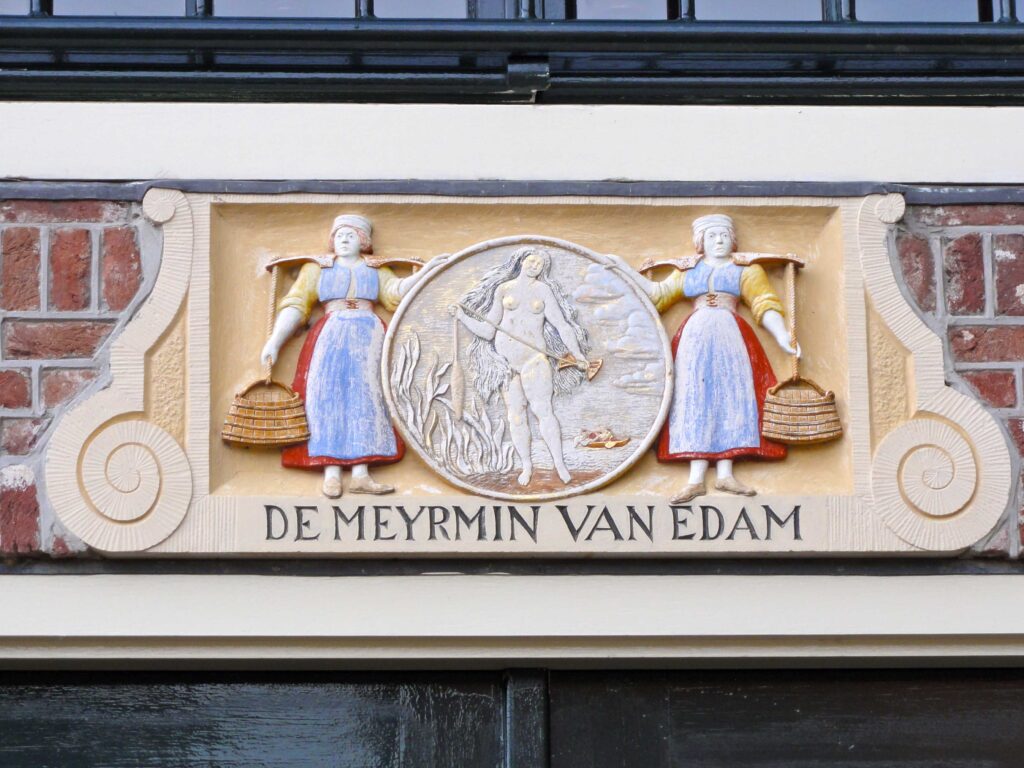
The Borries: Groningen’s Ghostly Hound
In the north of the Netherlands, particularly in the province of Groningen (and parts of Friesland), there’s a legend that has haunted the countryside for centuries. Locals speak about the Borries, a black dog said to roam the marshes of the region. The Borries is described as a large, black dog with a curly coat and disproportionately large head. Its tail is thick and sticks out steeply behind, and its huge dark eyes shine eerily in the moonlight.
Unlike ordinary dogs, the Borries moves with an unnatural gait, using its two left or right legs simultaneously with each step, giving its stride a distinctive sway.
Encounters with the Borries are considered ominous. According to folklore, seeing the dog is a bad omen, often signaling impending misfortune or death. In some tales, the Borries is said to drag searing hot chains behind it, adding to its terrifying presence. “When a Börries approaches you, there’s not really any hope of outrunning it. The best thing to do is be still; Don’t talk or move. Don’t even blink and it will pass right by. One story suggests that it likes to follow pedestrians and can change its size to whatever it desires.” – source here.
Not all stories depict the Borries as malevolent though. In certain areas, such as Ewer, the creature is described as “vadsig” (fat and harmless), suggesting a more benign nature.
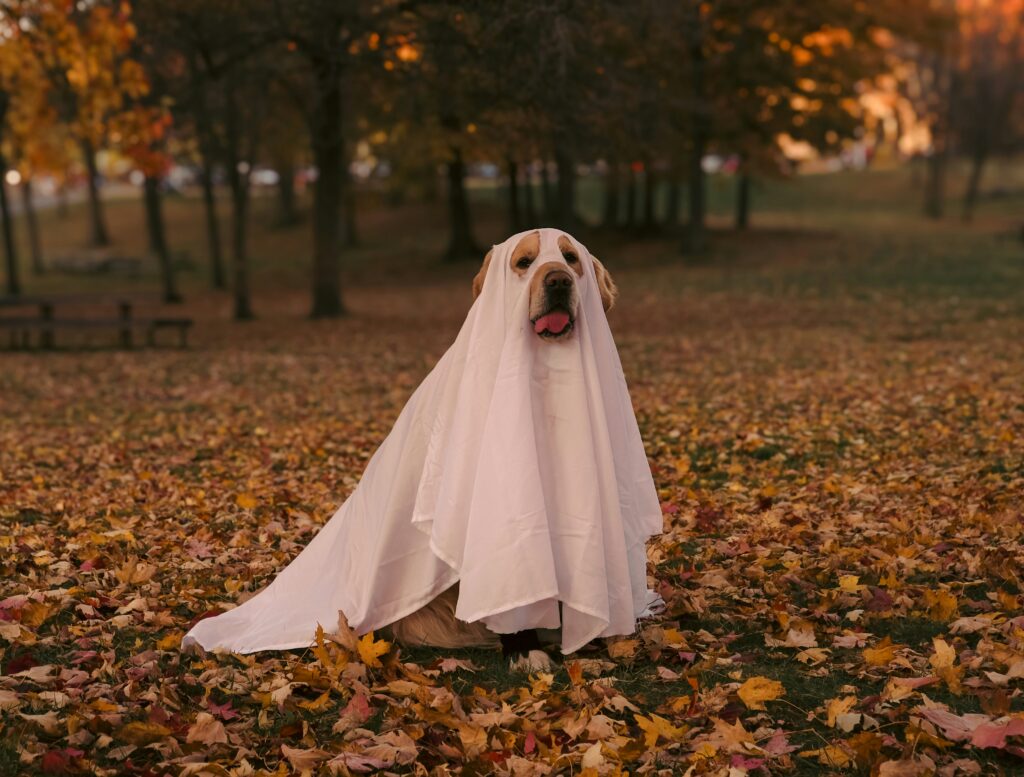
Spooky places that you can visit today
The Dam Square Gallows
It’s hard to imagine today, standing in the middle of Dam Square in Amsterdam, surrounded by pigeons, tourists, and the glow of department store windows, that this was once the city’s place of execution. But, for centuries, Dam Square was the stage for public hangings.
Criminals, rebels, and those accused of treason were led here to meet their end at the gallows. It was a grim spectacle, meant to remind everyone of law and order. Crowds gathered to watch, and the square that today hosts festivals and protests was once filled with the silence of waiting, broken only by the toll of the executioner’s bell.
Stories say that not all those who died here rested peacefully. Locals whispered about restless spirits that lingered on the square: shadows that moved without a source, cold gusts of wind on still nights, the uneasy feeling that you were being watched. Even long after the gallows were taken down, people claimed the energy of those deaths remained, soaked into the very stones beneath their feet.
Some ghost tours in Amsterdam still pause at Dam Square and invite visitors to close their eyes and imagine the scene. It’s unsettling, because when you stand there at dusk, surrounded by centuries-old buildings like the Royal Palace (once the city hall), you can almost feel the weight of history pressing in.
Try it and I bet you’ll never see Dam Square the same again!
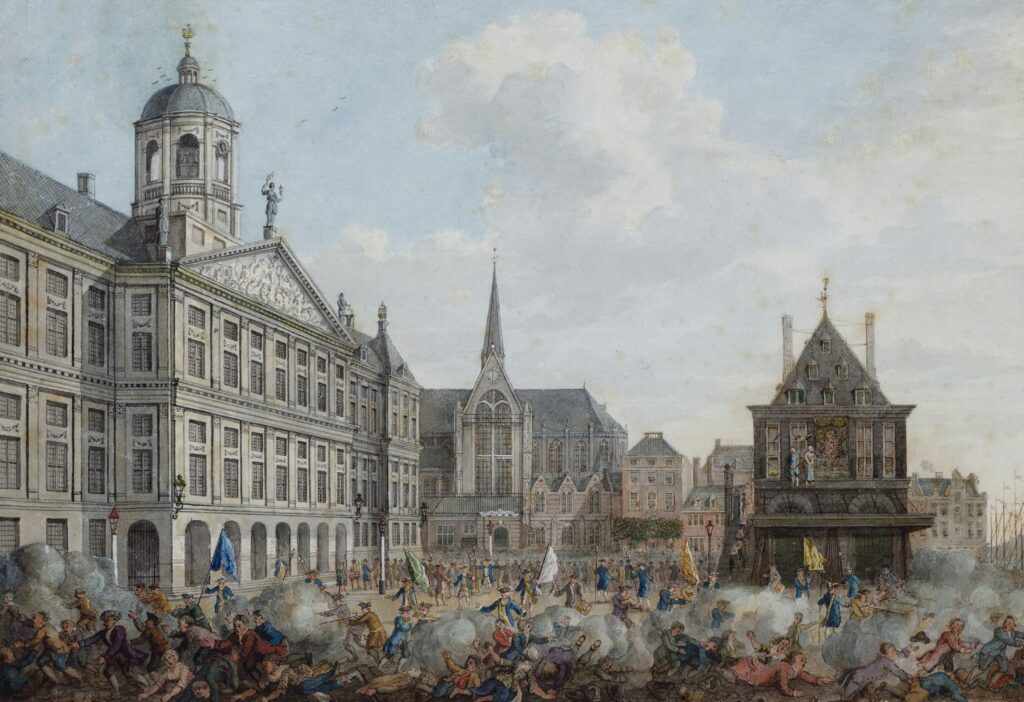
The Drowned Land of Saeftinghe
In Zeeland’s estuaries, the Verdronken Land van Saeftinghe is a salt marsh of birds, creeks and legend. Over the years, floods swallowed entire villages in this area. No matter how bravely the people battled the sea, the water always took its toll in Zeeland. On stormy nights, locals still speak of bells beneath the mud and cries on the wind. Today you can visit the area where villages used to be, walk on the mud and think about the continuous struggle of the Dutch with the forces of nature.
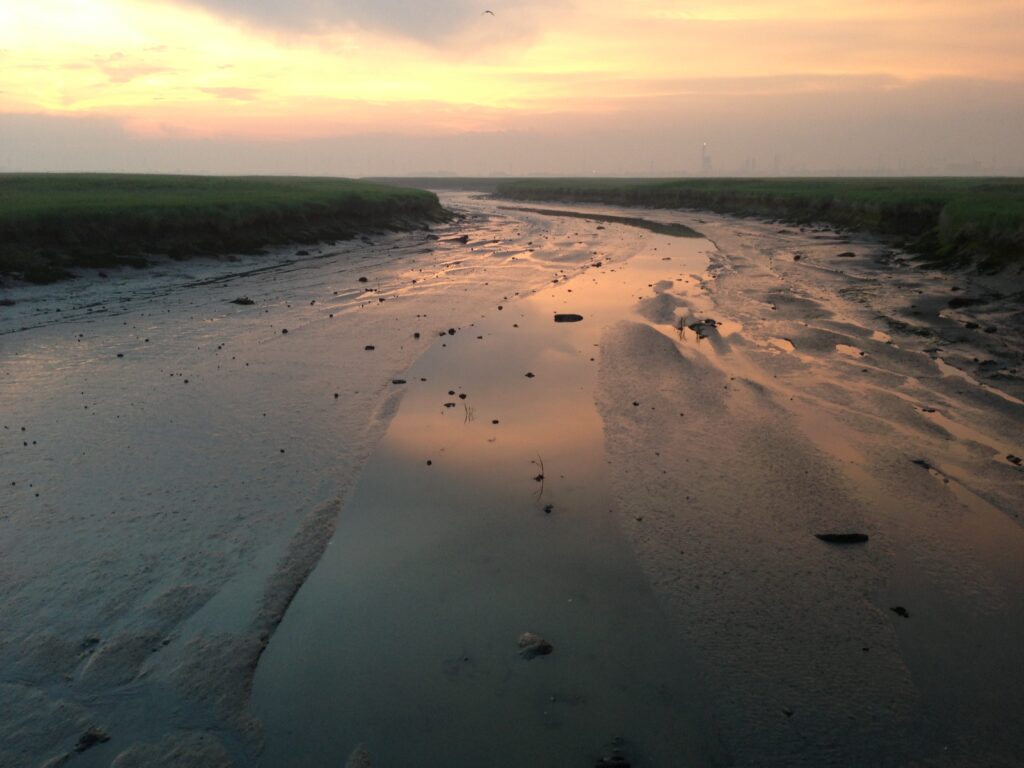
Hunebedden and the Giants
Scattered across the province of Drenthe are the hunebedden: prehistoric burial chambers, built around 5,000 years ago at the beginning of the New Stone Age (c 3,500 BC). These ancient dolmens are the Netherlands’ oldest monuments, and they come with their own share of legends. Local folklore says that these were built by giants, who brought the stone from far away to burry their kin. It also connects some hunebedden to the Witte Wieven, the misty white women said to guard the burial mounds, especially on foggy mornings.
The hunebedden are not just spooky; they’re also fascinating to visit. There are 54 of them (52 in Drenthe province, and 2 in Groningen). Many are well-preserved and open to the public, such as D27 near Borger, the largest in the country, and several smaller ones in the villages around Schoonoord and Rolde. Walking among these massive stones, you can almost feel the weight of centuries and maybe even the whispers of ancient spirits.
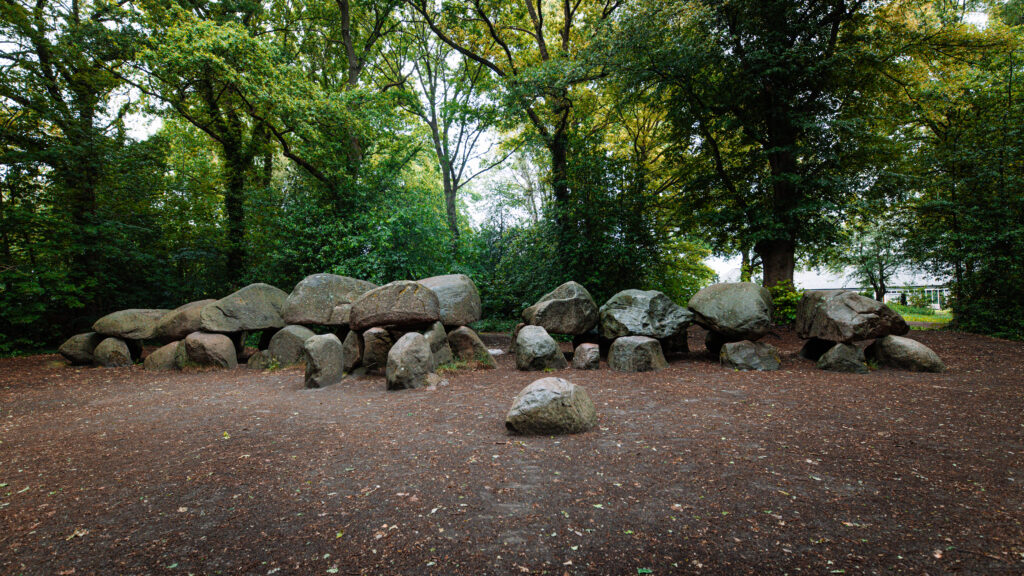
The Weighing House in Oudewater (Heksenwaag): Witch Trials and Uneasy Spirits
Oudewater may look like a charming Dutch town, but it has a dark history hidden behind its picturesque canals. The Weighing House (Heksenwaag) was where suspected witches were weighed to determine their guilt (a grim practice during the 16th and 17th centuries). If you weighed “too light,” the townsfolk considered it proof that you were a witch because you could fly on a broomstick.
Visitors today can step inside the Heksenwaag Museum and see the old scales, but some locals claim that the spirits of those unjustly accused never truly left. People report cold chills, sudden drafts, and the sense of being watched, echoes of the fear and injustice that once filled the town. It’s a haunting reminder that behind even the most charming Dutch streets, history can carry a shadow.
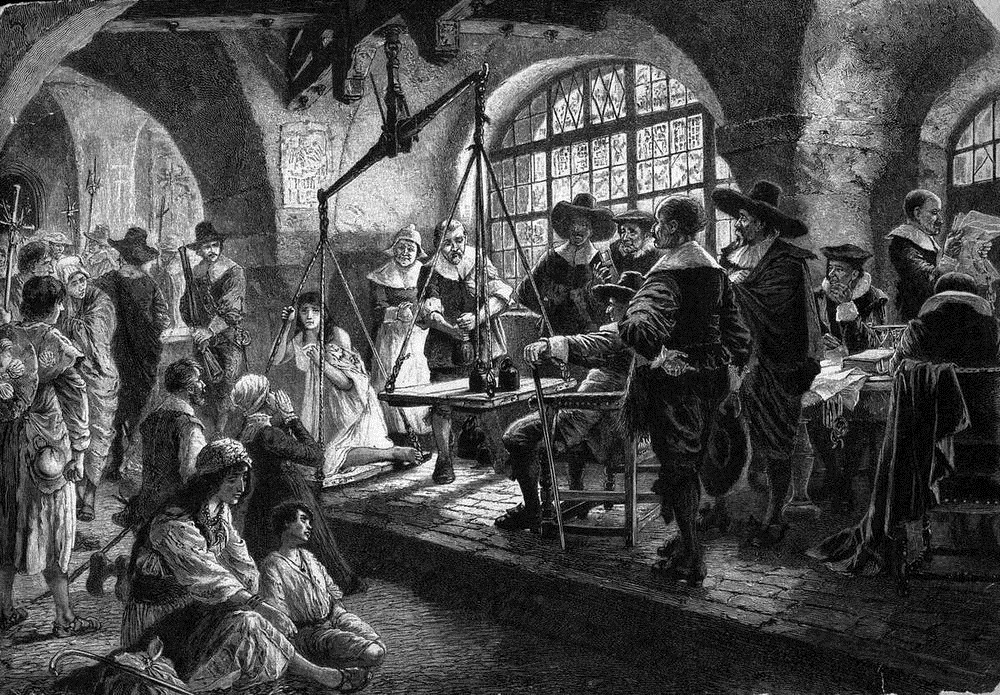
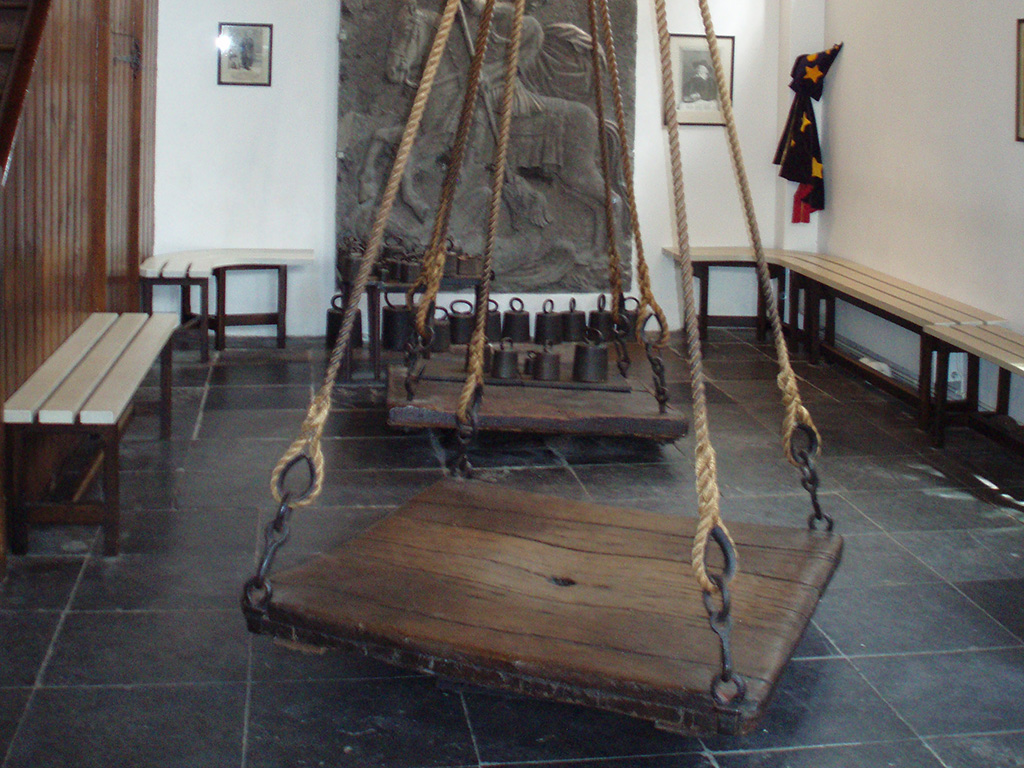
Haunted castles and houses
The Netherlands may not have towering castles everywhere, but the ones it does have are full of stories. If you want to visit a haunted castle, check out some of them:
Muiderslot Castle, near Amsterdam, hides 13th-century dungeons where prisoners once suffered and some visitors still hear footsteps and doors creaking.
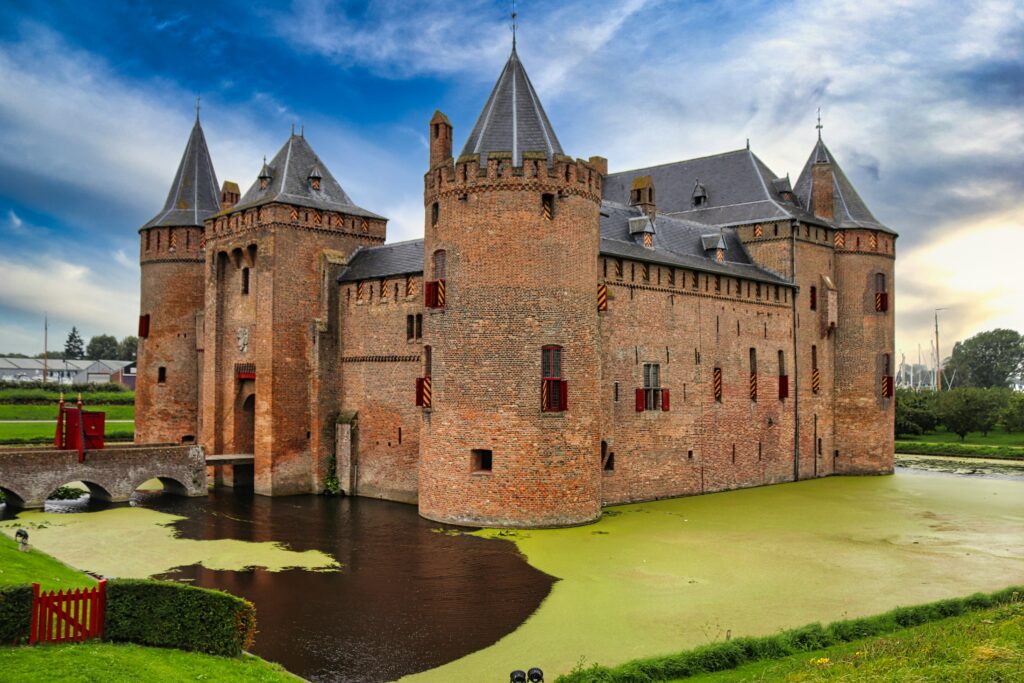
Hoensbroek Castle (Limburg). Located in southern Limburg, Hoensbroek Castle is one of the largest castles in the Netherlands. It is said to be haunted by the Blue Lady, Anna Catherina, who died in 1760. Legend has it that she is searching for her two children, who were supposedly buried within the castle walls without her knowledge. Visitors have reported sightings of a woman in blue wandering the halls and a sudden drop in temperature in certain rooms.
Valkenburg Castle (Valkenburg aan de Geul). Valkenburg Castle, the only hilltop castle in the Netherlands, has a history dating back to 1115. The ruins are said to be haunted by the spirits of former inhabitants. Visitors have reported hearing unexplained footsteps and voices echoing through the castle’s remains.
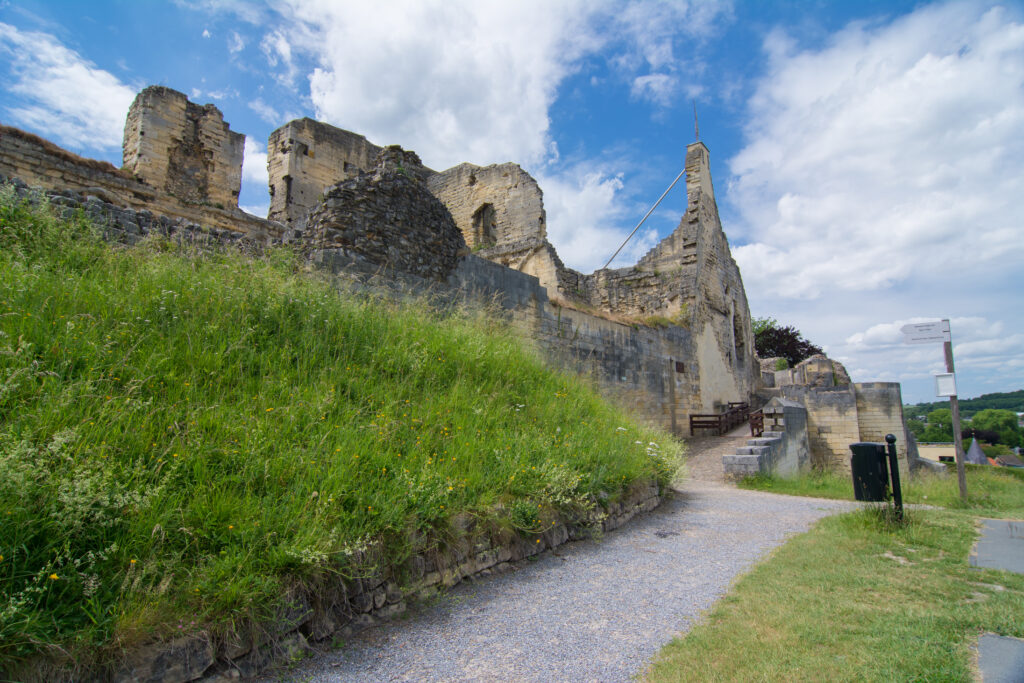
Slot Loevestein was a prison at some point in time, famous for Hugo de Groot’s escape in a chest, and locals say chains rattle through its towers at night.
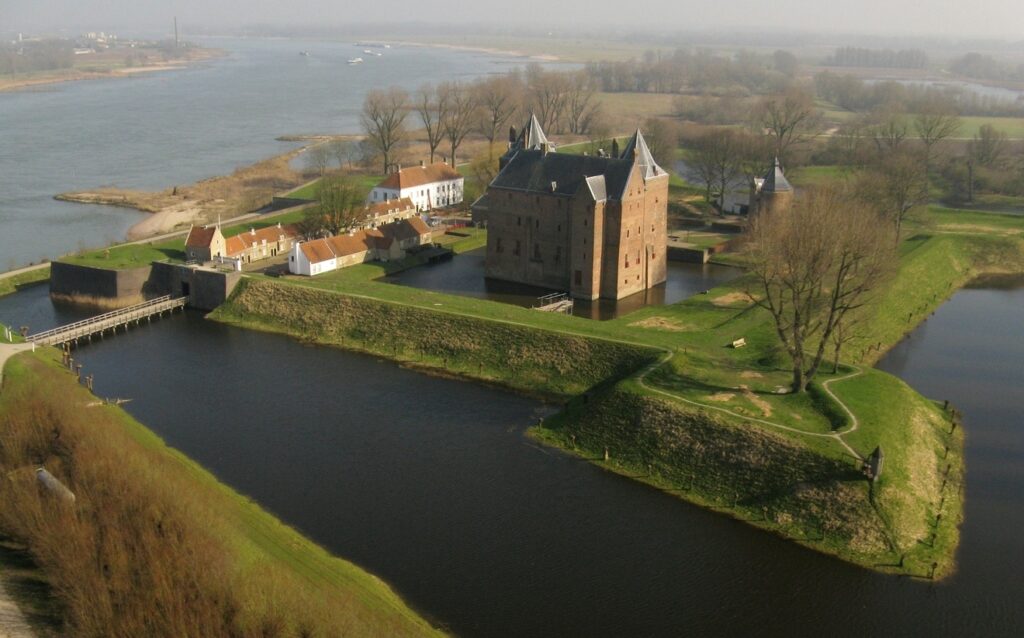
Singraven Manor (Denekamp). Dating back to the early 1500s, this was once the residence of Franciscan nuns. According to legend, a nun was bricked up alive as a building sacrifice. After her death, misfortune plagued the estate, with owners suffering untimely deaths and accidents. The spirit of the nun is said to appear, predicting disaster and misfortune.
Duivenvoorde Castle (Near The Hague) — is reputed to be haunted by the spirit of a former resident. Visitors have reported strange occurrences, including unexplained noises and sightings of a ghostly figure. It is said that photos taken at night time contain strange orbs.
Huis ter Kleef, near Haarlem, holds the ghosts of soldiers from long-ago battles.
So there you have it: the Netherlands isn’t just canals, tulips, and cosy cafés. Beneath the charming streets and serene countryside lies a world of ghosts, giants’ graves, misty women, and legendary monsters. The country has plenty of stories to make anyone look over their shoulder when walking the cobbled streets at night.
This Halloween, grab a flashlight, gather your courage, and go see the spookier side of the Netherlands. Which one of these places you’re ready to explore?
This page includes affiliate links. If you click and purchase, I may receive a small commission at no extra costs to you.
Stay tuned for more and follow Amsterdamian on Instagram and Facebook for more stories about life in the Netherlands. Please share this post if you liked it!
Check out my photo book: Amsterdam Through the Seasons!
Love what you’re reading? Support my work with a small donation.

